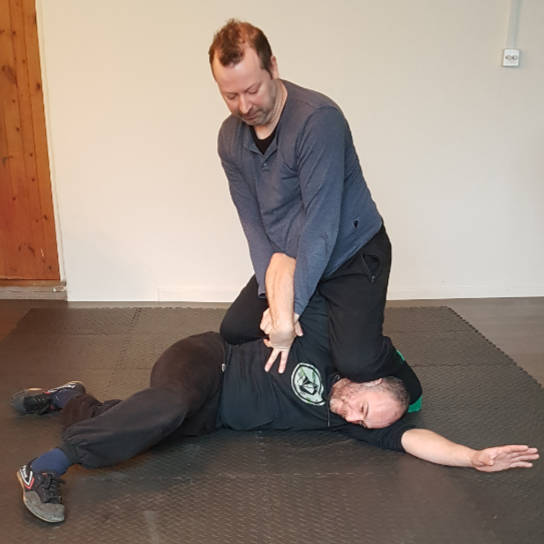History
Kempo, in many different varieties, forms part of Japan's contemporary subculture. Even today, hundreds of years after it was introduced to Japan from China, certain aspects are quite secretive - we've done our best to stay away from difficult subjects here, and consequently some names and events are omitted from the narrative.
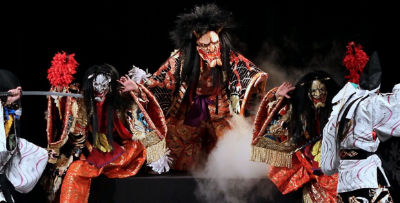
The native Japanese aspects of Kempo begin with Kagura, which are a wide variety of masked shamanistic dances that have been associated with Shinto shrines since before the beginnings of recorded history in Japan (which started with the Kojiki in 712). While Kagura pre-dates Kempo in Japan by some distance, some of the underlying principles of the Kagura have subsequently been incorporated into Kempo. Our own Mishima Kempo at mishimakempo.com is heavily based on Kagura principles.
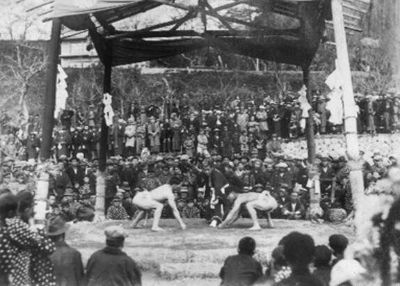
Also from before the beginnings of recorded history, Shinkouzumo, or Shrine Sumo, has been associated with Shinto shrines since the earliest times. It's ubiquity and fame in Japan has subsequently heavily influenced the development of Kempo throughout the generations.
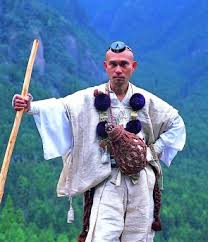
From around 800, Shugenja, ascetic mystics and warriors of the syncretic Shugendo religion appeared. In the Warring States period they fought on the same battlefields as the Samurai, and were instrumental in the military success and establishment of the Tokugawa government. The Shugenja have been a non-samurai source of martial power in Japan ever since.
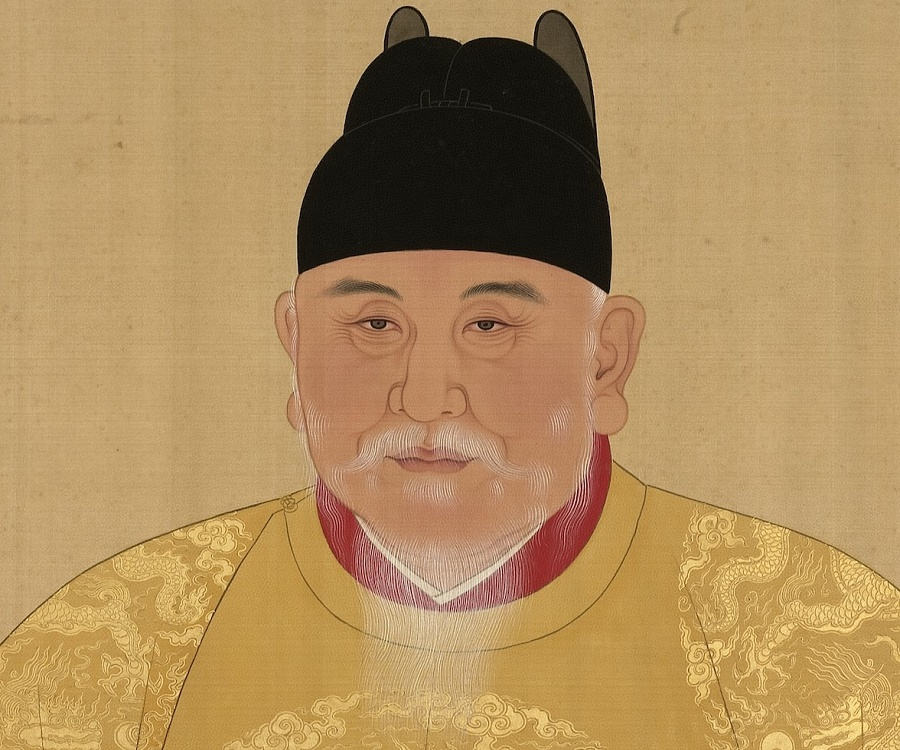
The first major phase in the development of Kempo occurred during the reign of the Emperor Hongwu (1328-1398) in China and the Shogun Askikaga Yoshimitsu (1358-1408) in Japan. This was a time of unprecedented cultural exchange between the two countries, and also one of political unification, to the extent that Yoshimitsu was formally appointed the King of Japan by Hongwu, even though technically speaking Japan already had an emperor. This was at a time when the imperial family in Japan was very weak, and nationalist sentiment was at a low ebb, so the Japanese martial artists of the time were very interested in learning from their counterparts in China. Many martial arts masters and military experts were brought over from China to share their knowledge with the Japanese warriors (Samurai). As a result of this exchange, new eclectic systems of martial arts appeared and were later incorporated into Japanese family and work group martial arts traditions as well as into formal martial arts systems, or ryuha.
An early application of the Kempo arts was their use by the Japanese pirates called Wakou, and also by the Japanese and Chinese forces who were trying to combat them (in many cases the line between piracy and counter-piracy was extremely blurred). While they were mainly led by Japanese, the Wakou counted many Chinese and South East Asian people among their crews, many of whom brought with them yet more martial arts, ideas and practices into Kempo from their home regions.
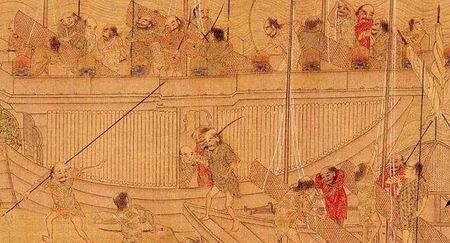
Due in great part to the situation-imposed outlook of the early Ashikaga shoguns, Kempo went on to became part of a larger subculture of flexibility and adaptiveness in the otherwise fairly stagnant society of Japan. This subculture extended much further than just martial arts, and embraced spirituality as well, and in particular the spirituality represented by the powerful Yoshida family.
The most dramatic changes in the history of the Yoshida came half a century later during the Muromachi Period ("Warring States" - 14th to late 16th Centuries). Early in the Muromachi the Yoshida Shrine's teachings further developed a pre-existing cloak of secrecy that was to last up until the present day. One of the reasons for this was the ascendancy of Buddhism, which had increasingly influenced the practice of Shinto throughout Japan. The Yoshida Shrine in Kyoto became a bastion maintaining the original naturalistic and flexible Shinto tradition in secret among the growing sea of Buddhism and Confuciansim that would eventually propel Japan into stagnancy and isolationism during the following Tokugawa period (1600-1868).
By the Fourteenth Century, Buddhism had already gained a reputation of usefulness in training main battlefield troops. However, the early Ashikaga Shoguns, particularly the third Ashikaga shogun, Ashikaga Yoshimitsu, though a supporter of Buddhism in the broader sphere, found an increased need for a more flexibile approach. He developed a precursor of modern special operations warfare that did not fit neatly into the "battlefield" classification. These activities included the "protection" of key political personages, judicious use of force in the management of political alliances, and counter-piracy.
To this end, specially selected bushi (warriors) were trained in Yoshida Shinto which was found to be more effective for applications where warriors had to think and respond to rapidly changing circumstances as well as fight. This should not be seen as a direct competition between Buddhism and Shinto, but rather that some small numbers of bushi received "standard" Buddhist training followed by "specialised" Shinto training. In the course of these events it was quicly recognised that many different specialised skills were also needed - and many of these did not exist in Japan, so they had to be imported from China. The more martial of these imported arts, used in conjunction with a Shinto and/or Buddhist base, became known collectively as Kempo, a transliteration of the old Chinese term "Chuan Fa", meaning martial arts. For this reason, Kempo is not a Japanese word, but rather the Japanese pronunciation of a Chinese word.
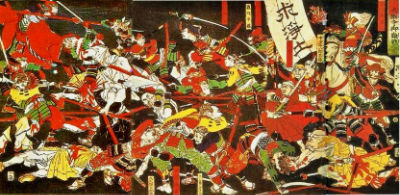
Around 1500 the Ikko Ikki included the peasant fighters of the Jodo Shinshu sect of Buddhism. They were so powerful that they defeated the samurai army of Nagao Tamekage in 1536 at the Battle of Sendanno.
The next significant event was the rise in power and influence of Yoshida Kanetomo (1435–1511), the greatest Yoshida leader in history. He was one of the original bloodline of the Urabe, the group who had provided Kiboku (strategic divination) for the Imperial family since ancient times and later became known as foremost among the extended Yoshida clan. The word Urabe has several meanings, the most simple of which is "fortune-teller", however on another level it means "secret family" or "hidden family", and this latter epiphet is one that the Yoshida have lived up to for centuries. The Urabe methods of divination were very sophisticated, extensive and strategic in nature, and should not be confused with the typical idea of fortune tellers, but rather they were more like social, political and military strategists.
In a modern sense, the Urabe could be considered ancient spin doctors and were strategic advisors to many of the most powerful figures in the country. The original home of the Urabe was in the mountainous Izu peninsula, but they had become the most politically influential Shinto group in the capital Kyoto (formerly known as Heiankyo) even before Kanetomo was born. Inheriting the abovementioned background and tradition, Yoshida Kanetomo succeeded his father Kanena, at the age of 26 in 1460 (the first year of the Kansho period), to administer the Yoshida Shrine and soon he was raised to a higher rank, ‘shoshii-no-jo’ in January 1467 (Bunsho 2), and was given permission to attend exclusively to the activities of imperially-governed shrines (known as shoten). Later he was also appointed to the status of Jiju, a chamberlain to the Emperor, as well as Jingi Taifu, the deputy director of the Jingikan, the powerful Department of Divinities. Incidentally, the era name was changed from ‘Bunsho’ to ‘Onin’ on March 5th 1467 and two months later in May, the Onin War broke out.
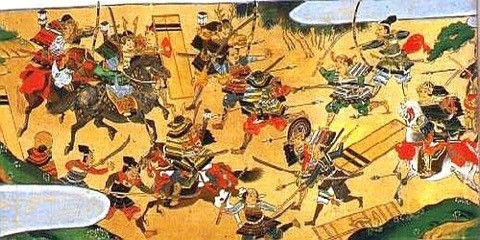
The long-running Onin war was characterised by the fact that there was no single dominant military force in Japan, with many regional lords posessing significant, though not overwhelming, armies as they vied with one another for power. The semi-political nature of many of the Kempo arts suited itself well to this period and many different groups adopted this kind of practice for use in alliance building and the undermining of their enemies. The Ashikaga were in a very poor position militarily, and the fact that their shogunate managed to run on for fifteen generations until 1573 is a testament to the flexible and responsive base of military ancilliary skills and strategies that Ashikaga Yoshimitsu had originally built, though these were extensively copied by others over time.
The entry of Yoshida Kanetomo to history was as dramatic as the Onin War, which triggered many other wars, from which the era name Sengoku period ("warring states" period) derived. One night during the Entoku years (1489 – 1491), Yoshida Kanetomo underwent a shamanistic experience and subsequently promoted the idea that the Kami (spirits) had moved from the Ise Jingu (Ise Shrine) to possess Yoshidayama (Mt. Yoshida - a small mountain at Kyoto). He had a hall built within the precincts of the Yoshida Jinja (Yoshida Shrine) to be the most superior site to enshrine Kami in the whole of Japan. This hall was named Nihon Saijo Jingi Saijo, Japan’s Supreme Spiritual Hall. Naturally, Kanetomo was heavily criticised by the officials of Ise Jingu and by various nobles for promoting heretical ideas. Nevertheless, Kanetomo overrode the resistance and had the Daigengu (Great Origin Shrine) constructed at Mt. Yoshida.
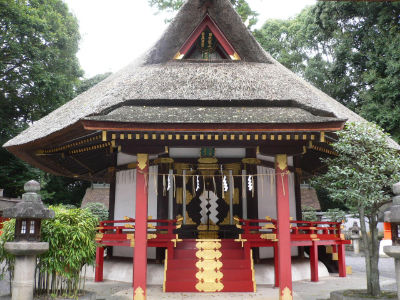
The Daigengu still exists, and has a unique octagonal structure, representing its status as drawing the Kami from all directions. This shape is based on the Hasshinden of the Jingikan, the eight divine coordinations that indicate the positions of eight major guardian spirits, and was adopted for the construction design of the Daigengu. The octagonal structure with a thatched roof and red-painted walls was extremely modern and prominent in those days, and the architecture was unique and unprecedented. This was also an early example of embedding and understanding of the Eight Trigrams of Chinese spirituality into Shinto.
Enshrined in the Daigengu was Taigen Sonjin (Kunitokotachi no Mikoto / Amenominakanushi no Kami), the supreme kami which is considered to be the source of all things and beings in the universe (this is a representation of one of the eight trigrams, or Hakke, that represents the continuous change in Nature). Although this "multi-kami enshrinement" was certainly not Kanetomo's personal perspective - rather, it was a message that he promulgated so that ordinary people could understand what he was trying to achieve.
From the perspective of the Japanese people, 3,132 other deities were also enshrined, surrounding Taigen Sonjin. In reality Kanetomo taught that all the myriad kami were simply human conceptualisations or aspects of one Kami, Taigen Sonjin - a euphemism for Nature. That is to say, Yoshida Kanetomo promoted the idea that Yaoyorozu no Kami (8 million Kami) in the universe, who were led by Amaterasu Omikami (the Sun Goddess), were all united into one by Taigen Sonjin with an emphasis on the idea that the Nihon Saijo Jingi Saijo of the Yoshida Jinja was to be regarded as the Sohonzan, effectively the Headquarters of Shinto. Thus his teaching was essentially both shamanistic and monotheistic. This outlook on spirituality made Kanetomo an extremely radical figure at that time in Japan, and has attracted people with an inclination towards Japanese counter-culture, including Kempo practitioners, ever since.
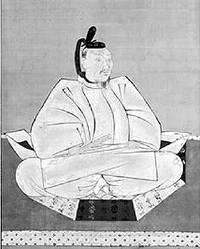
Many of Kanetomo's extensive writings have been preserved, and so his understanding of Kami, the fundamental basis of the universe, can be expressed today in his own words:
"Kami is that which existed before the appearance of heaven and earth, and which gives them their shape, going beyond yin and yang, yet embodying their flavour. Kami is fundamental existence, governing the universe of heaven and earth in their entirety, while dwelling within all things, where it is called Nature; omnipresent within human beings, it is called the spirit. That is to say , the human spirit communes with the Kami which is ruler of heaven and earth; spirit and Kami are one and the same. Kami is the root origin of heaven and earth, the spiritual nature of all things, the source of human development. Without form, it is Kami that nurtures/manifests things with form."
Yoshida Kanetomo incorporated the ancestry of the Onakatomi uji (clan), which was descended from Amenokoyane no Mikoto, in the family tree of the Urabe clan. Kanetomo was well aware that Amenokoyane no Mikoto was believed to be the ancestral God of the Fujiwara clan whereas the Arakida lineage, which served the role of the priest of the Ise Naiku (the inner shrine of the Ise Jingu) for generations, had the root name of ‘Onakatomi’. In other words, while Yoshida Kanetomo successfully exploited the renown of the Ise Geku (the outer shrine of the Ise Jingu) and the theory of Ise Shinto for establishing Yoshida Shinto, he also used the ancestry of the Ise Naiku’s priest to strengthen the political grounds of the Yoshida family. Moreover, Yoshida Kanetomo turned himself into the Lord of Shinto by gathering all kami in Japan (i.e. Yaoyorozu no Kami - 8 million spirits) on the small mountain of Yoshidayama.
Yoshida Kanetomo’s Shinto is commonly known as Yoshida Shinto or Yuiitsu Shinto (one and only Shinto). It is properly called Gempon Sogen Shinto (fundamental/elemental Shinto, or "Shinto of the Original Source"), which from a modern perspective is a description of Shamanism. His purpose was to get back to what had always been fundamental in nature religion and to reduce the influence of Buddhism, Confucianism and other inflexible doctrines on the heart of Shinto.
Kanetomo continued to spread Yoshida Shinto successfully during the Muromachi period by accessing the support of significant individuals including Hino Tomiko, the wife of the 8th Muromachi shogun, Ashikaga Yoshimasa. With the help of the Yoshida, Hino Tomiko was later successful in having her own son, Ashikaga Yoshihisa, become the 9th Ashikaga Shogun in the face of a succession dispute that was one of the major themes of the Onin War.
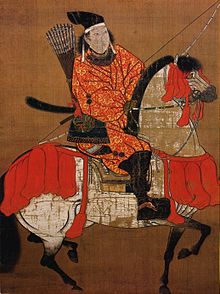
In 1495 (Meio 4), Kanetomo took the title Jingikan Ryocho no Kami of the Jingikan, and started to rival the powerful Shirakawa family, which was one of the hereditary Shinto families associated with the Imperial court and which had served the duty of Jingihaku, the Director-General of Jingikan since 1046 (Kantoku 3). Making full use of his political skills and support, Kanetomo successfully persuaded the Muromachi Shogunate to approve this - an action that was effectively muscling in on the well-established Shinto power structure - through which he furthered the status of the Yoshida family to become the Master of Shinto.
From this time, the majority of shrines in Japan came under control of the Yoshida family, and Shinto priests were appointed with approval of the Yoshida family. It was among the priestly families associated with the Yoshida clan, and the many families, groups and guilds that were associated with their shrines, that the precursor arts of modern Kempo were chiefly handed down to early modern times. It is worth noting that the extended Yoshida clan also had much influence outside of the bounds of Yoshida Shinto. For example, two Yoshida family members, Yoshida Kenko and Yoshida Jihen, both experts on the Tendai branch of Buddhism, established Ise Shinto, the Shinto school associated with the Ise Grand Shrine, now the highest ranking shrine in the whole of Japan. This was based upon the idea of "shinpon-butsuju setsu", the combination of Shinto and Buddhist teachings in a sympathetic harmony. Other branches of the Yoshida were associated with Buddhist sects such as Zen and Shingon.
Today, in the precincts of the Yoshida Jinja, there is the Honsha, the main shrine, where the principal deities, Kasuga-Shijin (or Shishin) (Four Kami of Kasuga) are enshrined, two Sessha, subordinate shrines, dedicated to minor deities, and nine Massha, also subordinate shrines, in one of which (Shinryu-sha) the spirit of Yoshida Kanetomo is enshrined. The precincts of the Yoshida Jinja cover most of Yoshidayama, which is famous for exhibiting beautiful seasonal views, especially stunning autumn colours.
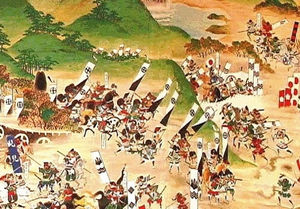
With the rise of the Tokugawa Shogunate following the battle of Sekigahara in 1600 Japan became more unified, but also more isolated as a result of the Tokugawa's insular policies. Sekigahara was a turning point in Japanese history from a long period in which feudal warfare was the norm, into a period of relative stability and peace that lasted until the second half of the nineteenth century. During this insular period of Japanese history the Kempo styles resident in Japan went through a distillation process with relatively little new Chinese Kempo coming in from outside, while at the same time cultural pressure grew gradually to make these Chinese-originated arts appear more Japanese. The practitioners were forced to take their existing Kempo forward in the best way that they could. Some people re-named their systems to be more Japanese-sounding, using names such as Yawara-Gi and Jujutsu instead of Kempo.
Owing to the lack of actual battles to fight, there was also a radical re-working of the cultural outlook of the Samurai from a focus on the battlefield to a focus on management of the peasants and personal duelling, and this also had an effect on the direction of the development of Kempo. Less than one fifth the adult population were permitted to practice martial arts openly, and so the peasantry had to practice their own arts in secret.
Under Tokugawa law, a samurai could kill a peasant at any time for a spurious or perceived affront. However in practice this became an increasingly bad idea over time, since samurai could fall foul of bands of non-samurai enforcers working behind the scenes, often at the behest of the politically low-ranking yet increasingly powerful merchant class, of work guilds, and also of spiritual authorities like the Yoshida. The so-called Burakumin, the lowest of all social classes in Tokugawa Japan, also needed to protect themselves in this way. In time, some of the Burakumin gradually gained power as members of the Tekiya, one of the groups who later merged to form the modern Yakuza. Many of these enforcers, derogatively referred to as Tesaki ("fingertips") by the authorities, were Kempo practitioners and they were more than capable of killing a samurai who had strayed too far in the exercise of their legal right to brutalise the peasantry.
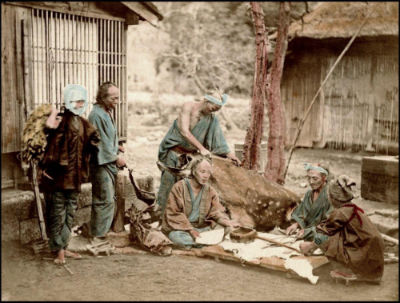
Most of the burakumin were illiterate, so much of their history is not recorded (though it does form part of their own internal oral tradition). However, they were a significant part of Japanese sub-culture, and there existed whole burakumin towns called Etamura. It is interesting to note that despite the extensive history of the literate samurai class, there were far more burakumin in Japan than there were samurai throughout the whole Tokugawa period.
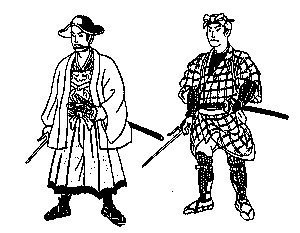
The eclectic fighting methods of the Tesaki (non-samurai enforcers) of the Tokugawa Period were the primary means of applying martial force for groups who did not have access to samurai military retainers. Such groups included secret societies, religious groups, merchant guilds, work guilds, village and family elders, the police (see Okappiki below) and Ikki (people who banded together behind particular causes - for an example see Ikko Ikki above), as well as samurai leaders who wanted things dealt with without being seen to be involved.
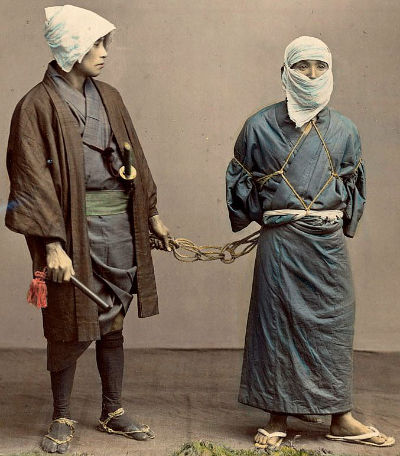
The Okappiki were a type of Tesaki recruited from the lower classes of society by the Edo period police as strong-arm men and informants. They were particularly skilled in catching wanted criminals.
During this time, the only major exchanges of martial arts with China occurred on the island of Okinawa, where a few related types of Kempo eventually became known by the name Karate, literally meaning "Chinese Hand". Only much later, after being imported to mainland Japan in 1922, did Karate get re-named "Empty Hand" as a result of the bias of the Japanese people against the Chinese that was popular in the latter part of the first half of the twentieth century. Thus, technically speaking, Karate is also Kempo, although it combines Chinese and Okinawan arts rather than Chinese and mainland Japanese arts as does most Kempo.
The Tokugawa were militarily much more powerful than the Ashikaga had been, and consequently had little need of the clever and flexible politics and military strategies instituted by their predecessors. They imposed a much more controlled and insular version of Japanese civilisation in which groups and activities that were not regulated came under suspicion and even persecution. Over time, the Yoshida and their flexible attitude became something of a safe haven for groups who might be considered on the fringes of mainstream Japanese culture, while at the same time becoming much more secretive in order to avoid the wrath of the Shogunate. Of particular note among these fringe groups were the developing "Shinshukyo" or "New Spiritualities of Japan". These were spiritual groups, many of which were founded by modern-day shamans, that challenged the stilted and stangant status quo in a variety of ways, and it was in association with these groups that more modern martial artists practiced their arts, under the protective wing, so to speak, of the gradually decreasing, but still formidable, power of the Yoshida. It should be noted that under the Tokugawa regime the common people were not allowed to practice martial arts, and therefore had to do so in a clandestine way. The close relationship between adaptive martial arts development based on the underlying principles of adaptive spiritualities has continued to the present day and takes many forms.
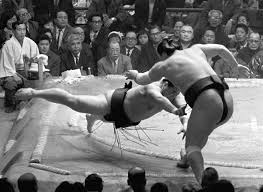
A regulated, professional form of Sumo with consistent rules and a more sporting outlook developed from 1684 onwards, starting at the Tomioka Hachima Shrine. Today this is known as Ozumo, or Professional Sumo. Its great rise in popularity over time has meant that many of the Sumo techniques and strategies ended up in modern Kempo.
In the Ninteenth Century the Tokugawa experienced increasing numbers of difficultures including economic problems, internal rebellions and an increasing desire for modernisation among some parts of the Japanese population. In the mid 1850s Commordore Matthew Perry of the US Navy and his fleet forced Japan open to trade for the first time since 1600, humiliating the Tokugawa Government in the process. Further problems for the Tokugawa ensued leading to their final fall from power in 1868 with the Meiji Restoration, which restored the Emperor to power and disbanded the samurai.
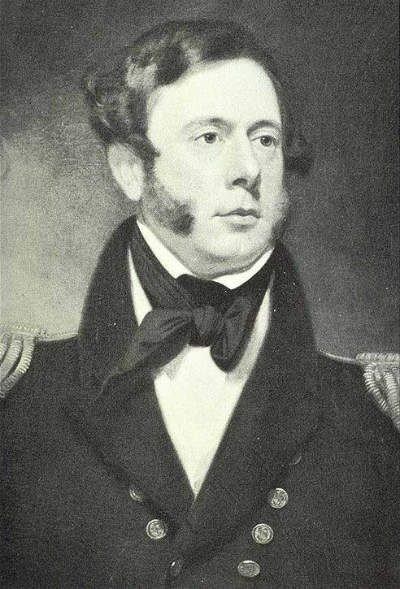
During the ensuing Meiji period (1868-1912) thirteen of the Shinshukyo were recognised as "shinto sects" by the government, and at least four of them were already well-established by the time that the Emperor Meiji was restored to power following the Shogunate's humiliation at the hands of the western powers. These four were; Kurozumi-kyo and Tenri-kyo, both of which had Yoshida affiliation, and Konko-kyo and Tohokami-kyo (later called Misogi-kyo), which had Shirakawa affiliation. Shinto "priests" were therefore appointed by both families accordingly.
Following the fall of the Tokugawa in 1868, Kempo began a new phase in its history, and Kempo masters of the era once again turned to the Chinese martial arts for the inspiration and development of their own arts. Exchange between different martial artists also took off in Japan, encouraged by the increasingly nationalist government. Thus it was not uncommon for practitioners of Kempo, Jujutsu, Judo, Karate, Kendo and other arts to practice together, and many ideas from these other systems were absorbed into Kempo. Martial academies such as the famed Meirin Academy were also established to train soldiers in the martial arts, and formed centres where practitioners of diverse disciplines could come together and exchange ideas.
An example of this type of master of multiple martial arts was Shobei Masuno, a samurai of the Choshu clan and subsequently an adherent of the Shinshukyo, who was born on the 1st of March 1849. The Choshu were descendants of the Sengoku warlord Mori Motonari who was famous for his hugely successful employment of Murakami pirates (Wakou) in his military campaigns on his way to becoming the most powerful warlord in Western Japan.
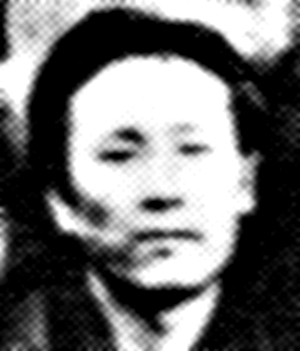
Shobei was named Tomojiro as a child when he enrolled in the Meirin Academy, subsequently studying a wide variety of martial arts and classical literature relating to the martial traditions. An expert in the use of multiple weapons, he was particularly noted for his swordsmanship and archery. Shobei became a trusted vassal and retainer of the Choshu clan lord, Mori Yoshichika.
The Mori family had historically governed the neighbouring Hiroshima region, but expanded their interests into Yamaguchi Prefecture after the fall of the famous Ouchi family in the 16th century. At their greatest extent the Mori clan dominated virtually the whole of the Chugoku region, but after defeat in the battle of Sekigahara they were forced to abandon much of their territory and retreat to Hagi, where they remained powerful up until the time of Shobei Masuno.
In 1864 the Tokugawa shogunate attempted to conquer and subjugate the Choshu clan. The largest army assembled in Japan for over 200 years was launched against the Choshu clan of Mori Yoshichika. Although he was only 15 years old, Shobei fought for his lord valiantly on every major field of battle. Due to the skill and effort of Shobei and his companions the Tokugawa regime were ultimately not successful, and their heavy handed tactics simply sowed the seeds of unrest in Japan as a whole.
In modern history, the Choshu clan are now remembered as the main catalysts of the fall of the Tokugawa Shogunate. Within four years the Shogunate had fallen, and the Meiji Emperor was restored to power in 1868, the first emperor to hold the reins of power in Japan since 1185. Needless to say, as a result of this the relationship between the Choshu clan and the Meiji Emperor was extremely good at this time, since his rise to power had come almost exclusively as a result of their heroic actions against the Tokugawa, and when the Emperor made a request for the most able and trusted samurai from the Choshu clan to form the core of his Imperial Guard, Shobei Masuno was chosen.
So, in 1869, when he was 20 years old, Shobei found himself in the honoured position of escourting the Emperor up the Tokai Road to Tokyo on the famous journey to take up residence in the new imperial palace, the symbolic beginnings of the Meiji Era.
Shobei left the Imperial Guard in 1872 and took up a career in the newly booming rail industry. Just as he had done in the military, Shobei rose quickly through the ranks, working in several different places, ending up as Station Master of the busy San-no-Miya railway station in Kobe in 1878.
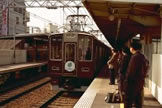
In 1874 Shobei married Ito, the daughter of Haruno Risaburo, a native of Kobe, and following the progressive business-centric mood of the time, together they decided to set up their own business, opening a shop called "Tokyo-Ya" in one of the busiest districts of Kobe. The idea of the shop was to stock wares that could normally only be found in the capital. As it happened this was a very successful venture for them, but unfortunately in 1881 Ito developed a quite serious eye illness, and despite regular medical treatment by 1884 she was almost totally blind. In this year, a friend of the family recommended that they ask someone called Tenrisan for help.
Tenrisan was female shaman from a village called Shoyashiki near Nara. One of her local students in Kobe, Koyama Yazaemon, was able to restore Ito's sight within about 30 days of treatment. Shobei could not understand how medical experts had failed over a period of four years, while Koyama had succeeded in only 30 days, but it seems that Koyama was either unable or unwilling to satisfy Shobei's enquiries. So, in March 1884 Shobei decided to travel to Shoyashiki to meet Koyama's teacher.
Tenrisan was a woman whose real name was Nakayama Maegawa Miki, and it so happened that the day of Shobei's arrival in Shoyashiki corresponded with the date of Tenrisan's release from Nara Prison. A number of Tenrisan's students had gathered to welcome her home, and as an outsider Shobei sat at the back of the room while she was served a small cup of mirin (sweet rice wine). As she sipped from the cup she surveyed the room. Shobei was a little surprised when the first thing she said was, "Masuno from Kobe, please come forwards". He made his way through the group to the front and Miki handed him her cup of mirin, saying "Here, I give you this. It is good that you have come. There will be a time when you will stay."
Shobei did indeed become Tenrisan's student. Tenrisan's students also included several other great characters from diverse martial arts backgrounds.
Tenrisan was born on the morning of April 18th, 1798, at Sanmaiden in Nara Prefecture. She was the daughter of the samurai Maegawa Masanobu Hanshichi. As a child Miki was kind and generous to the other children, and also excelled in all kinds of arts and crafts, but there was no particular indication of the dramatic events that would come later in her life.
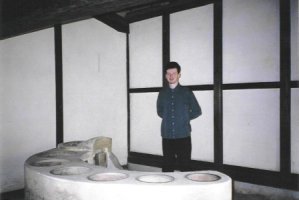
At a very early age she developed a deep interest in Buddhism and became an initiate in the inner aspects of the Jodo Shu (Jingtuzong in Chinese) school, which had originally been brought to Japan from China by Honen (1133-1212), and which became establised at Higashiyama in Japan in 1175. It was Miki's wish to lead an ascetic life within the Jodo Shu tradition, but her family were keen that she should marry and on the 18th of September 1810 she married Zembei Nakayama, the son of a relatively wealthy land owner from Shoyashiki Village.
The union between Miki and Zembei can be seen in some respects as representing the changing times in nineteenth century Japan. That is to say, the daughter of a member of the old ruling class, the Samurai, marrying a member of the emerging non-samurai power brokers who had a more western outlook and values based upon business and trade. Fifty eight years after their marriage this would culminate in the overthrow of the Samurai by a new captialist and imperialist western-looking governement in 1868 when the western-leaning Emperor Meiji was restored to power.
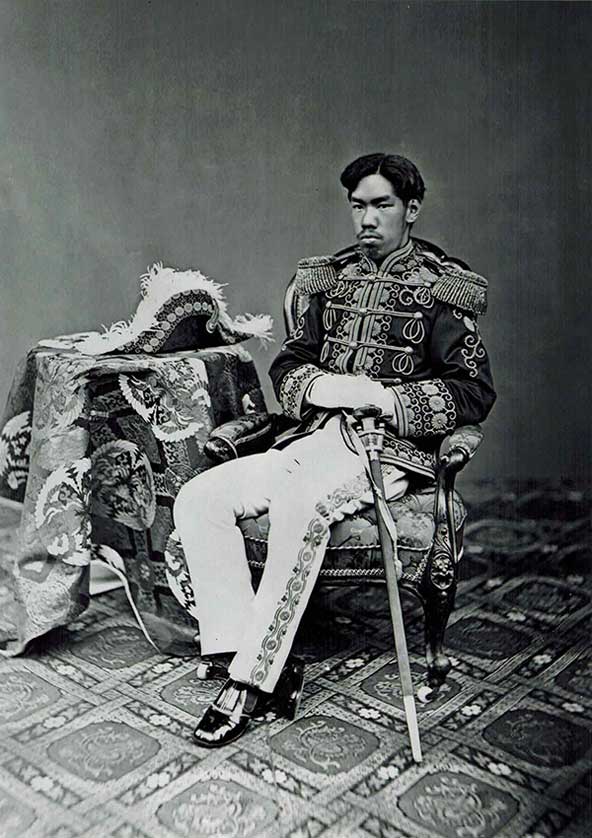
However, despite her new role as wife and mother, Miki remained involved in esotericism, and when her son Shuji became ill she assisted the local healer, a Gyoja (ascetic monk) called Ichibei, as a shamaness. On one occasion in 1838 during Shuji's treatment she entered a permanent shamanic state. From this point she began referring to herself as Tsukihi-no-Yashiro (月日の社). Tsukihi means "Moon and Sun" and is a metaphor for the laws of Nature, -no- is a posessive particle in Japanese, and a Yashiro is a shrine. While it is more typical for a shaman to go into and out of the shamanic state at different times, Miki remained permanently this state for the next 50 years.
Between 1838 and 1841 Miki remained in a storehouse at the Nakayama property in an endless shamanic technique that is sometimes called "Maeza", or "Front Sitting". The majority of the villagers at Shoyashiki were convinced that she had gone mad. Later, she began to come out of the storehouse on occasions, but it was clear that she was unrecognisable from the person who they had known years earlier.
In 1839 Tenrisan began to give away the Nakayama family assets and belongings to the poor and needy. Once these were all gone she began to give away the family's grain and cotton stores.
Zembei was completely devastated, but Miki seems to have been able to persuade him of this course of action to an extent. However, when she began dismantling the mansion she effectively forced him to comply. Her perceived ill treatment of Zembei became a source of resentment among friends and relatives and they cut their links with the family. The future of the family looked very bleak as it continued to acquiesce to extreme demands. Miki's explanation of these events was, "Water that falls from the lofty heights will splash back up when it has struck bottom, no matter how others try to hold it down".
In 1848 Miki began teaching arts, crafts and cultural activities in the village, and through her extreme level of ability, and also her generosity, in this endeavour she began to regain some of the respect that had been lost in previous years, although she was still subject to ridicule on occasion. At least a few people began to suspect that she might not actually be mad.
In 1853 Zembei died, and Miki accelerated the dissemination of her teachings, sending her daughter Kokan to Osaka as an envoy, and attracting disciples to her in various ways. The following are just a few examples of these disciples: Matsumura Eijiro, veteran fighter of the Choshu Uprising and Toba Fushimi Wars; head samurai of the Matsumura clan, retainers to the Lords of Yodo. The Matsumura line stretches back unbroken to the Nara Period [646-710]; Yamamoto Risaburo, a Sumo wrestler; Izumita "Lucky Bear" Tokichi, expert in breaking techniques and aragyo practitioner; Kita Jirokichi, renowned sword master and Confucian scholar; even though he was primarily a sword master he was at one time offered a lucrative place in a professional Osaka Sumo stable - a remarkable achievement for someone of relatively slim build.
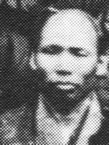
Miki didn't teach any one art in particular, but rather taught a general way of understanding nature that applied to all arts, crafts, cultural activities and other skills such as agriculture and medicine. While the following excerpts from her life relate to her martial abilities, equal numbers could be given relating to her exceptional skill in all kinds of disciplines. This ability to unify what is seemingly diverse is what makes her teaching so fundamentally useful to Kempo practitioners and other martial artists who combine together diverse styles of martial arts.
The following incident is one of the reminiscences of Ueda Tamizo. It took place in 1878 when Tamizo was 18 and Miki was 81. One day when Tamizo visited the residence Miki said to him, "Tamizo, let's, you and I, have a contest to see who is stronger." To give Tamizo an advantage Miki went up on the raised platform at the north end of the room while Tamizo stood on the ground below. Miki indicated that Tamizo should pull her down from the platform. They tightly gripped each others hands and after a shout of "one, two, three," began to pull. Though Tamizo pulled with all his might Miki did not move even an inch.
Three years later in 1881 she did a similar thing with Yamazawa Tamezo, at that time aged 25, when he visited Miki with his brother Ryozo. They found her sitting on the high raised platform in the Tsutome-Basho building (which is still standing today, but not on exactly the same site). She stretched out her hands in greeting and called to them, "Try to pull me down from here, the two of you together. I do not mind falling off." The two men grabbed her hands and tried to pull her down, but instead the harder they pulled the more they were drawn towards her. Although they pulled with all of their muscle, the old woman drew them towards her surprisingly gently.
Nakagawa Bunkichi was a native of Honden in Osaka, and a successful Sumo wrestler. His arms bulged with muscles and he was renowned for his tremendous strength, of which he boasted habitually. In 1880 Bunkichi visited Miki's residence. She was delighted to receive the wrestler and said, "I welcome your seeking the parental home and returning here". Nakagawa had not been to the Residence before, but she was referring to the fact that the residence is built next to the Jiba in the centre of Yamato, the most ancient province of Japan, in mythology the point of creation. Miki thought to reward Nakagawa with a lesson, and asked him, "Let us have a grappling contest." Bunkichi could not refrain from smiling wryly at the old woman's words. However there were others present and he could not refuse her, so he took up his guard. At his first attack Bunkichi attempted to apply a hold to Miki's left wrist, but he was immediately seized by a sharp pain in his arm which felt like it was about to snap. The pain was so intense that he was forced to give up, and he asked Miki's forgiveness for doubting her. Then Miki said, "You need not be surprised. If a child puts forth all his strength, the parent must also put forth strength. This is the principle of heaven. Do you understand?" Though it is doubtful that Bunkichi understood fully at that time he was greatly impressed and subsequently became a loyal student of Miki.
One day in 1883 Miki said to Naokichi Takai, Yosaburo Miyamori, and others who worked at the residence, "Let's have a contest of strength," and extending out her arm asked them, "Press down on it as hard as you can". This was similar to the unbendable arm exercise familiar to modern martial artists, but with the important difference that her wrist was hanging in thin air, not supported on someone's shoulder. They all took hold of her arm and tried to force it down but were unable to do so. When it became clear that they would fail she lightly took hold of their arms in turn and they became numb and lost strength. "Twice as much strength is on the side of Kami.", was her explanation.
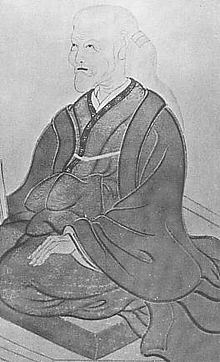
In 1885 Hidenobu Nakano of the Koizumi feudal clan visited Miki's residence. Nakano was famous in the region for his abilities in Jujitsu and Kendo, and was renowned for his great power. Miki said to him, "Nakano, you are known as a strong man in the country. Now try to remove your hands," and she took hold of his wrists. Nakano at first exerted only a little strength and tried to free his hands, but she didn't let go. So he became serious about it, and with a Ki-Ai shout, tried to grapple his hands free. But Miki remained steady, unmoving with perfect composure. Nakano, who was still in the prime of life, tried, with his face flushing, again and again with all kinds of ways to release himself. But Miki retained an awe-inspiring calm and continued to smile pleasantly. He could do nothing. Finally Nakano felt that his wrists were starting to be seriously damaged, and powerful as he was he could not bear the pain any longer. "I am overwhelmed, please release me," Nakano conceded at last. Releasing him Miki said, "You do not need to apologise. If you let go your strength, Kami will also let go Kami's strength. If you exert strength, Kami will also exert strength. This applies not only now but always."
By the mid 1800s a lot of Kempo development was once again going on alongside, and intermixed with, a complex re-juvenation of the Japanese spiritual traditions. In 1855 the old feudal Tokugawa government of Japan was humiliated by Commodore Matthew Perry of the US Navy who forced Japan open to trade using modern warships to threaten the city of Edo (now called Tokyo). Just over a decade later the discredited Tokugawa government fell and was replaced by a modernising government headed by the Emperor Meiji. Consequently, Japan became very western-looking, and was the first East Asian country to modernise its military along the lines of a western power.
As part of the modernisation process, military advisors from Great Britain and other countries were hired to completely re-engineer the military training regime. This included the introduction of western boxing and wrestling, which were quickly incorporated into Kempo training, but also less obvious things like the adoption of coloured belts in the martial arts that paralleled the insignia of rank used by the western militaries and the fact that modern Japanese arts like Karate often do a kind of "marching up and down the square" type of western military-inspired training (called Kihon). Together, Judo and Karate created a kind of typical idea or model for modern martial arts training that was adopted by other arts, including Kempo to a greater or lesser extent.
During the same time period, the old martial arts schools of Japan, called Koryu, were considered part of the outdated and discredited feudal system, and started to die out from the 1860s onwards, and by about 1910 most of them had already gone (a very small number survive today). Some Kempo masters of this era made an effort to seek out the old practitoners of these dying schools and picked up a lot of the techniques that they had once contained, incorporating them into an ever growing group of Kempo methods.
In 1890 Japan took a further step in the direction of becoming a western power, holding its first ever democratic General Election for the lower house of the National Assembly. The degree of change since 1868 is demonstrated by the fact that only 9% of voters were from ex-samurai families, while 91% were commoners.
The two Sino-Japanese wars (1894-1895, 1837-1945) and the attendant occupation of large parts of Chinese territory by the Japanese afforded Kempo masters serving in the armed forces the opportunity to study with Chinese martial arts masters once again, especially after the Japanese occupation had embedded itself for a significant time period in Chinese territory. The Japanese forces had the support of the Chinese emperor, Pu Yi, which, while not exactly staving off Chinese nationalist sentiment against them, certainly smoothed the way for those Japanese martial artists who held a degree of respect for the Chinese to be accepted as students of Chinese masters.
Interestingly, Emperor Pu Yi was himself a practitioner of the Bajiquan style, which is called Hakkyokuken in Kempo. The late nineteenth and early twentieth century exchanges, both with China and internally between martial arts in Japan, produced many able Kempo masters, some of whom became famous, while others, no less able, were less famous.
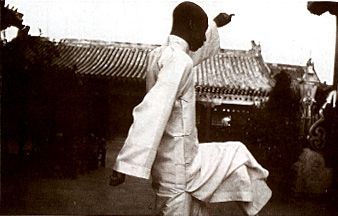
In 1896 a Kentojutsu (western-style boxing) club was opened in Yokohama by Master Saito Toranosuke, which was soon copied by others. Kentojutsu clubs started to spring up around the country. At that time the distinction between Kempo (chinese boxing) and Kentojutsu (western boxing) was not a strong one, and western boxing influenced modern Kempo to a huge extent at this relatively early date. Just like Kempo, Kentojutsu was very popular as a modern martial art of non-samurai origin, and by the 1920s virtually everyone who was a modern Kempo practitioner was also a Kentojutsu practitioner and vice versa.
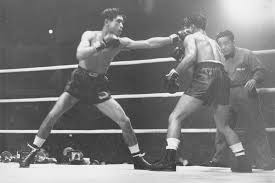
Early in the twentieth century, the Japanese government asked the Chinese government to provide their best martial arts master to teach Kempo practitioners on the Japanese mainland (this was during a mid-period between the two Sino-Japanese wars, when the two governments were on relatively friendly terms). In 1911 Master Hao En Guang was selected by the Chinese martial arts community (which included the famous grandmasters Li Shuwen and Li Cunyi) as the best Chinese master to travel to Japan to teach people in Japan itself. His selection was based on his experience as a bodyguard and his unbeaten prizefighting record. It was also based on the fact that he did extensive inter-style training with masters of other arts. It was felt that he would be best able to defeat native Japanese martial arts masters if he was challenged, and Master Hao did indeed defeat several Japanese masters in challenges during his several years in Japan, and became particularly known for beating Kendo masters with his Chinese sword.
Master Hao spent several years in Japan and taught many Japanese martial artists. In Japan he became known by the Japanese version of his name - Kaku Onko.
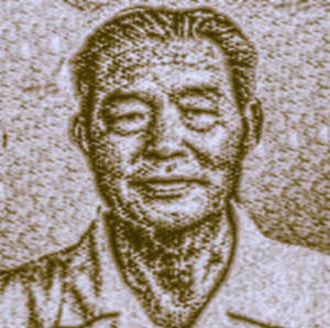
The picture above is an artist's impression of Master Kaku Onko based on a close relative. Partly as a result of political events that occured more than thirty years later, no known photographs of him survive. People who had been friends to both China and Japan became reviled by the leadership of both nations as a result of the events leading up to and during the second world war, and many photographs were destroyed in an attempt to erase people who were deemed undesirable from history.
Mishima Kempo has a direct lineage from Master Kaku Onko, who was one of the toughest martial artists of the early 20th Century - this is exemplified by the fact that he was still active as a professional bodyguard into his 70s, long after his contemporaries had retired from the profession. The Kempo he introduced to Japan in 1911 is called Keiiken. It is characterised by fluid, powerful striking combined with constantly changing strategy, and Mishima Kempo draws heavily on Keiiken.
By this time Kempo began to form an outlet for people who were interested in practising martial arts without the stuffy and arrogant atomosphere of the martial arts that originated from the former samurai class, and the disgusting brutality and abuses of poor people that were associated with them. Furthermore, it was no longer necessary to be born into a samurai family in order to practice martial arts.
Kempo became, and to an extent still remains, the first martial art of the lower classes of society, of the modernising Japanese military, as well as of the Japanese underworld and some of the emerging new spiritualities and spiritual movements of Japan (Shinshukyo).

Kempo was associated with modernisation, rather than with the clinging to the past that the formal martial arts schools (Koryu) represented. Note that this was more than twenty years before a very different Japanese government started to push "samurai values" (the so-called "Bushido") as part of their propaganda campaign for World War 2, while simultaneously re-writing history to make it look as if the sixty-year period between about 1870 to 1930 had never happened.

The atmosphere of modern Kempo training is relatively relaxed compared with other Japanese arts. This is important as the over-systemization, stuffiness, rules, regulations and rigidity of the former samurai arts and their modern revival counterparts historically formed a smoke screen behind which atrocities were committed, both in World War 2 and before the fall of the Tokugawa in 1868.
From the 1920s, the introduction of Okinawan Karate to mainland Japan by Gichin Funakoshi and others became influential in the development of modern Kempo, and the nature of Kempo continued to evolve as a consequence of the subsequent explosion of popularity of both Karate and Judo in early twentieth century Japan. In particular, the Okinawan master Kenwa Mabuni moved to Osaka and started to teach Kempo in that region, especially with Kansai University which became a hotbed of progressive Kempo development.
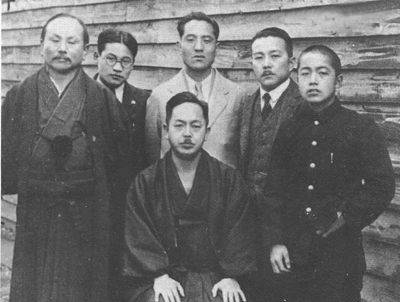
In those days there was not a clear distinction between Kempo, Kentou, Kentoujutsu, Taigi, Kakutojutsu and Jujitsu - all of these words were often used interchangably. Mabuni himself called his martial arts Kempo, before later starting to use the word “Karate” once that term rose in popularity after the meaning was changed from "Chinese Hand" to "Empty Hand". This is one of the reasons why today Kempo goes under several names such as "Kempo Karate" and "Kempo Jujitsu".

By far the most famous modern Kempo masters were (in no particular order): Master Sawayama Muneomi, who created a sporting version of Kempo known as Nippon Kempo; Master Nakano Michiomi who created Shorinji Kempo; Master Mitose Masayoshi of Kosho Ryu Kempo; and Master Sawai Kenichi of Taikiken. There were a great many others who contributed significantly to the development of Kempo during that time, including Master Aoki Yasumitsu, Master Takagi Jiro, and Master Mochizuki Minoru. Subsequently, several masters from established Japanese Karate schools also began to take a more innovative, Kempo-style approach to martial arts, and incorporated Kempo-like training methods into their own systems. These included Master Ashihara Hideyuki (the creator of "Fighting Karate") and Master Kurosaki Kenji (the creator of K-1). This process of exchange between the martial arts has now produced a rich variety of 20th and 21st century Kempo in Japan, and is still on-going - encompasing such modern developments as Shin Kakuto Jutsu, Shooto and K-1, and heavily influencing the modern Japanese military.
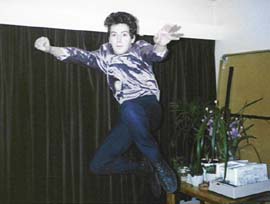
Our chief instructor, Damon Smith, began training in Kempo and Karate in 1977, and quickly became addicted to the martial arts in general. Like many Kempo exponents, Damon also studied (and continues to study) the original Chinese arts from which Kempo is ultimately descended.
Damon was fortunate to be accepted as an inside-door student (uchideshi) of Japanese Kempo master Takagi Hiroshi, though he continued to study other arts as well, and by the end of the 80s he had studied Kempo, Xing Yi, Karate, Kakutojutsu, Jujitsu, Kumtao (Malaysian Kempo), American Kickboxing, Judo, Iaido, Bando and Muay Thai, and had started to combine them together. In 1988 Damon resigned as the instructor of Stirling University Karate Club, instead opening a small Kempo club at the university. Karate was very popular in Scotland at that time and his Karate teaching had started taking up too much of his time - time that he wanted to spend on Kempo and Chinese martial arts, particularly Xing Yi (Keiiken in Kempo parlance). He incorporated the different Kempo styles he had studied, and increasingly introduced the flavour of his main Chinese art, Xing Yi. Xing Yi was also the main art of the early Kempo pioneer in Japan, Master Hao En Guang, whose tradition and eclectic, multi-style, cross-training approach to Kempo Damon has pursued ever since.
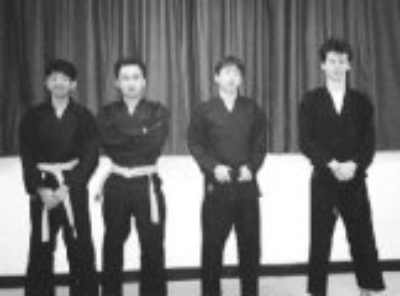
The transition to a full time Kempo teacher proved to be a difficult one. While Karate had brand recognition in Scotland, with thousands of people practising it, few people had even heard of Kempo, so to begin with he could only attract a few Japanese nationals who were living in the UK. It remained difficult to get British students for several years.
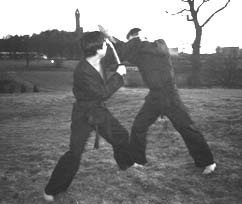
In 1991 Damon moved to Leeds to study with Master Zhu Guang, who had a direct lineage from Master Hao En Guang - the same Chinese master who had originally taught and inspired the Kempo community in Japan in the 1910s. Together, Master Zhu and Damon co-founded a Chinese martial arts club at Leeds University.
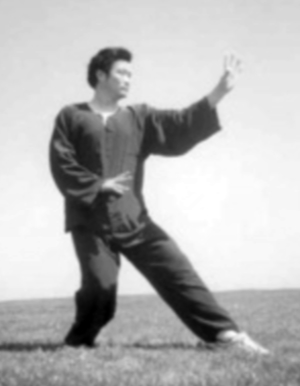
He also re-opened his Kempo club in Leeds.
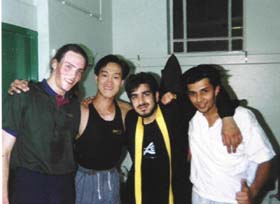
At the same time, he began training with two other British Kempo experts who were based in Leeds, Sensei Harry Lea and Sensei Phil Marsh. Both had a lot of real-world hands-on fighting experience, with Sensei Marsh in particular having worked as a lead doorman in some of the most notorious nightclubs in the country. Sensei Lea had been a successful amateur boxer and kickboxer before he took up Kempo. All three are still good friends today.
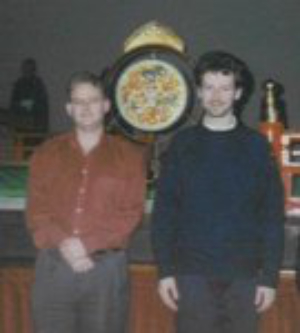
At around the same time through contacts in Japan Damon met his long-term teacher and mentor Sensei Kato Eiichi, who remained Damon’s teacher for the next 25 years until his passing. Through Kato Sensei’s influence Damon started studying and training periodically in Japan, and was fortunate to get in on the ground during the formative years of a Kempo style known as Shin Kakutojutsu, training in authentic "back street Kempo".
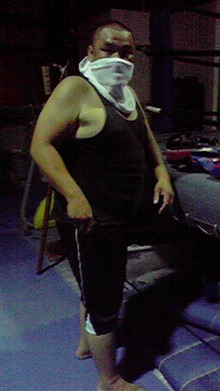
In 1994 Damon was training at the Mishima Shrine in Nara Prefecture when he started to feel that his multi-style Kempo was starting to achieve a level of coherence, and so at that time he started calling his Kempo "Mishima Kempo", in honour of the shrine. (Note that the Mishima Shrine near Nara should not be confused with the similarly named and much more famous Mishima Taisha in Shizuoka - although they sound similar, they are separarted by approximately 200 miles)
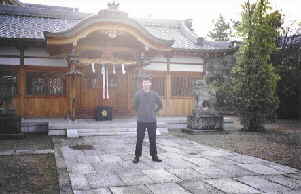
He felt that the Mishima Shrine provided a good analogy for his move from big/popular martial arts into small/unpopular martial arts. In earlier times the shrine had to move because it was located next to an enormous new shrine. In the move it lost its once beautiful shrine pond and sank into obscurity.
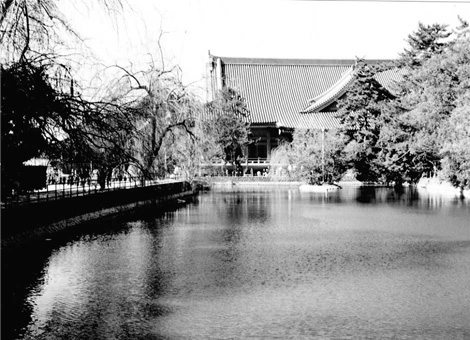
Since that time the symbol of the shrine has been adopted as the symbol of Mishima Kempo.
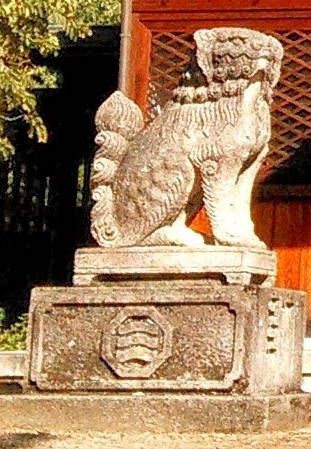
Damon also spent many years training with Sifu Jason Todd, who was his main sparring partner during the 90s. Damon and Jason made extensive researches into both barehand and weapons sparring, including sparring with unusual traditional weapons such as Chuai (battle-hammers) and mismatched weapons such as Japanese sword vs Chinese sword. These researches paid off many years later when one of Damon's students, Alistair Chatterley, became European Full Contact Chinese Sword Champion.
Damon has been a long-term student of the spiritual foundations of the martial arts, and in particular of the shamanistic Shinshukyo traditions of Japan and the associated Yoshida tradition that in former times formed an overarching banner for them.
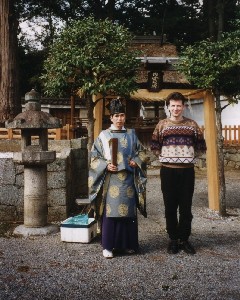
From 1998 he had the opportunity to work in China and studied with many different martial arts masters there.
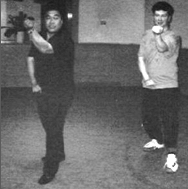
In 2004 Damon became the inside door student of Sifu Raymond Rand, from whom he learned Choy Lee Fut (now his no.3 art after Kempo and Xing Yi), Tai Chi Chuan and Sixteen and a Half Point Pole. He also practices regularly with Sifu Rand's other senior students, Sifu Douglas Robertson and Sifu Donald Kerr, who have more than 30 years of martial arts experience each.
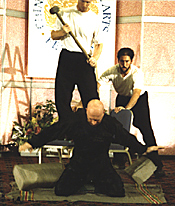
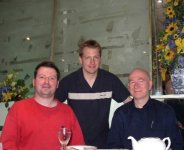
He also began a long collaboration with a fellow student of Sifu Rand, Prof. Graham Barlow, a teacher of Tai Chi, Choy Lee Fut and Brazillian Jiu Jitsu, and the pair now host a regular podcast together, the Heretics Podcast, which deals with Martial Arts and Eastern Spirituality among other esoteric topics. Damon's job involves a lot of travel, and he continues to pick up new arts wherever he goes, in recent years taking up MMA, White Eyebrow Kung Fu and Dorjee Lam. Along the way, Damon began collaborating with Sensei Derek Williams, a hoplogist and long-term student of Master Kanazawa Hirokazu, and the two founded the martial arts cross-training group known as FoXfist, which is still active today. In 2014 he moved to Cornwall and teamed up with fellow martial artist and sports performance expert Brett Gallaway. Brett is ex-military, has bachelors and masters degrees in sports performance science, and from the age of 12 onwards has trained in multiple martial arts including Kempo, Xing Yi, Baji, Jujitsu, Karate, Taekwondo, Lau Gar, Wing Chun and Mongolian Wrestling. Together, Damon and Brett started Mishima Kempo Cornwall.
